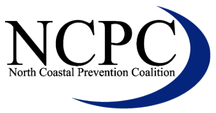It’s important to recognize the role the tobacco retail environment plays in youth access to and use of tobacco products. For many children and teens, their exposure to tobacco products begins at their local convenience store. About half of middle and high school students visit a convenience store at least once a week. Kids who shop at convenience stores regularly are more at risk of starting to smoke than those who don’t shop at convenience stores. Why? Because the tobacco industry spends billions of dollars each year to advertising its products in local retail establishments, from large chains to small mom-and-pop shops. 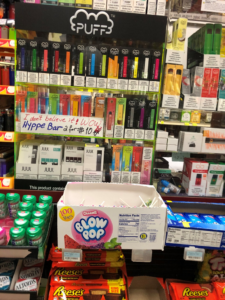
According to the most recent Federal Trade Commission (FTC) Cigarette and Smokeless Reports, in 2020 the tobacco industry spent $7.84 billion on marketing cigarettes at the point of sale, and $567 million on marketing smokeless tobacco products. Additional funds are paid to retailers to offer their tobacco products at discounted prices. This accounts for more than three-quarters of the industry’s total marketing dollars. The money they spend in retail keeps advertisements prominent and prices low.
Tobacco companies use something called the “point of sale” marketing strategy in order to increase their sales and they know how to get the attention of kids! This strategy includes: price discounts and promotions, a variety of products available in attractive and sleek colored packaging and sizes, and placement of products near kid-friendly items like candy. Can you spot all the strategies used at this retailer in Vista?
For years, researchers have been investigating the effect tobacco marketing has on not only youth access but youth actually starting to smoke. It has been well-established that exposure to tobacco advertising and promotions in the retail environment is directly related to future youth tobacco use. In fact, youth more frequently exposed to tobacco promotion are more likely to not only try smoking but become a regular smoker.
Tobacco Retailers in Our Community
In the City of Vista, there is also an over-abundance of tobacco stores compared to essential services like grocery stores and common places like Starbucks. These stores are often in close proximity to youth-friendly places like schools, parks, recreation centers, churches and other locations youth often visit. Kids often walk by or go into these stores on their way to and from school every day. This overexposure of product promotion and availability can often lead to youth starting to use tobacco products like cigarettes or vapes.
In Spring of 2021, Vista High School’s STAY Club created a Photovoice project to shed light on the tobacco industry’s presence in their own community. Photovoice is a process in which people like you can capture images of problems happening in your community. This leads to discussions on how to assess these issues and can lead to community change when shared with decision-makers. The STAY Club Photovoice project really showcases what the youth see in their everyday lives and just how present tobacco products are in their communities – from advertisements on the store windows they pass on their way to school to tobacco waste seen all over their streets, parks and schools.
Check out Vista High School students’ Photovoice projects here.
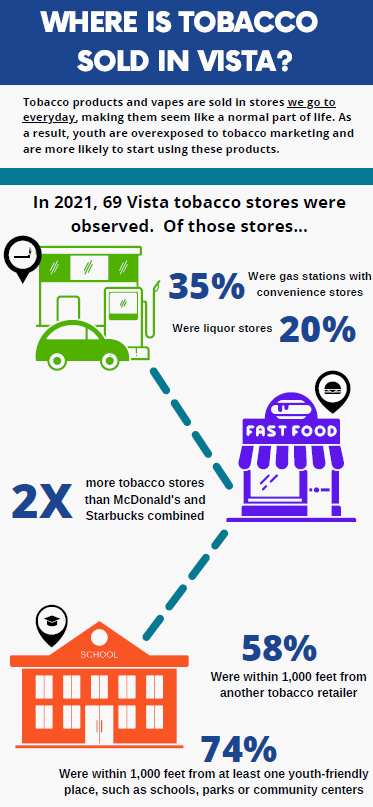
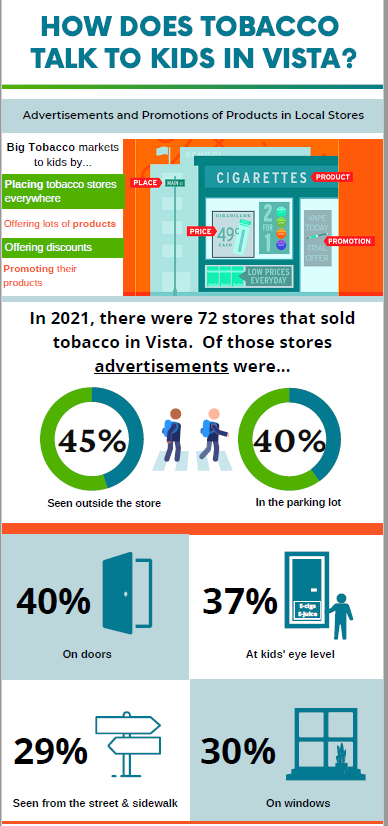
Aren’t There Federal and State Laws that Prohibit the Sale of Tobacco Products to Minors?
Yes, both federal and state regulations that prohibit the sale of tobacco products, including e-cigarettes, to minors.
As of December 20, 2019, the federal minimum age for the sale for tobacco products was raised from 18 to 21 with no exemption for military personnel. The change was effective immediately.
In California, the Stop Tobacco Access to Kids Enforcement (STAKE Act) prohibits the sale of tobacco products (including e-cigarettes) to youth under 21. However, the STAKE program can only perform annual compliance checks in 7% of stores that sell tobacco.
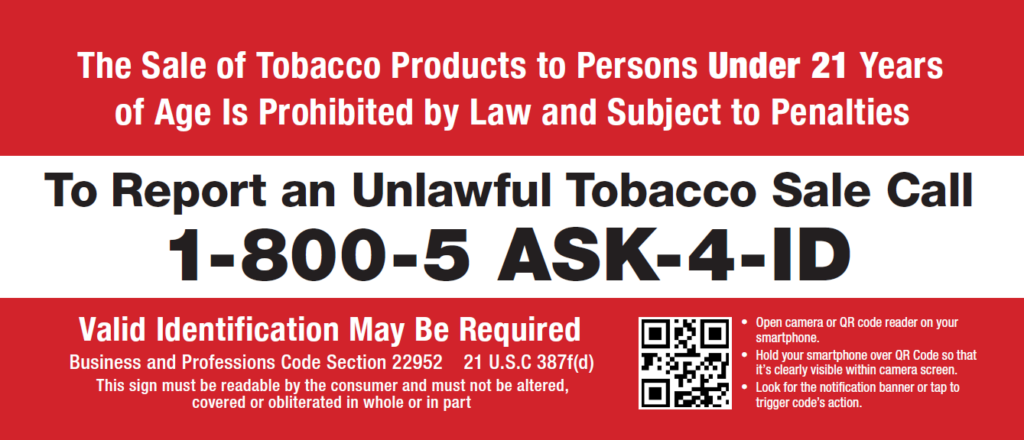
If these regulations are in place, how are youth buying e-cigarettes and other tobacco products?
According to the 2019 Young Adult Tobacco Purchase Survey, about 16% of tobacco retailers in San Diego County sold products to youth under the age of 21. Most of these sales occurred at small markets, convenience stores, cafes, discount stores, and liquor stores. Tobacco products that were sold were cigarettes, electronic tobacco products, cigars and little cigars or cigarillos. In fact, little cigars or cigarillos were the most purchased item.
Taking all of this into consideration, how can we reduce youth access to and use of tobacco products?
Local policymakers can adopt policies that limit the amount and location of tobacco retailers and the advertising in the retail establishments.
In Encinitas, for example, retailers are not allowed to place tobacco advertisements or promotions near items such as candy, snacks and non-alcoholic beverages. In addition, local policymakers can adopt Tobacco Retail License policies.
Tobacco Retail Licensing Program
A Tobacco Retail License (TRL) requires tobacco retailers to obtain a local license, from the city or county, in order to sell tobacco products in the community. The fees collected from the license are used to administer the program and conduct annual compliance checks of underage sales laws.
TRLs create real consequences for retailers that are caught selling tobacco to youth and provide resources to help local enforcement to enforce the law.
In a community with a strong TRL, repeat violators could lose their tobacco license.
Over 140 cities and counties in California, including Los Angeles, Sacramento, San Francisco and El Cajon have reduced the availability of tobacco by adopting strong TRL policies. Locally, four North County cities have a TRL: Vista, San Marcos, Oceanside and Escondido. San Diego County adopted a TRL that regulates tobacco stores in the unincorporated areas of the County.
There are several policy solutions that local policy makers can do to help reduce youth access to tobacco products in the retail environment and protect kids from the harms of their use.
Photo credit: Countertobacco.org
Many California cities and counties have added plug-ins like these to strengthen their TRLs:
Minimum Price and Minimum Pack Size
The purpose of a minimum price and pack size requirement is to make tobacco, especially cheap cigars, less affordable and accessible for youth. The Surgeon General has recommended a minimum price of at least $10 per tobacco product.
These two protections are most effective when paired together, so tobacco companies cannot offer packs of cigars for less than $1.
Flavoring Restrictions
San Francisco, Palo Alto, Oakland, Contra Costa County, Los Gatos, Santa Clara County, Yolo County and Beverly Hills have all adopted policies ending the sale of all flavored tobacco – including menthol cigarettes. More recently, California voters upheld a statewide flavor ban, SB-793, via ballot measure. This law took effect January 1, 2023, and banned the sale of flavored tobacco products, including menthol cigarettes and e-cigarettes. The tobacco industry has fought back by producing “California-compliant ‘non-menthol’ menthol” cigarettes that attempt to bypass this law by using synthetic coolants as opposed to natural menthol. Additionally, retailers continue to sell flavored vaping products, making enforcement of SB-793 an ongoing challenge.
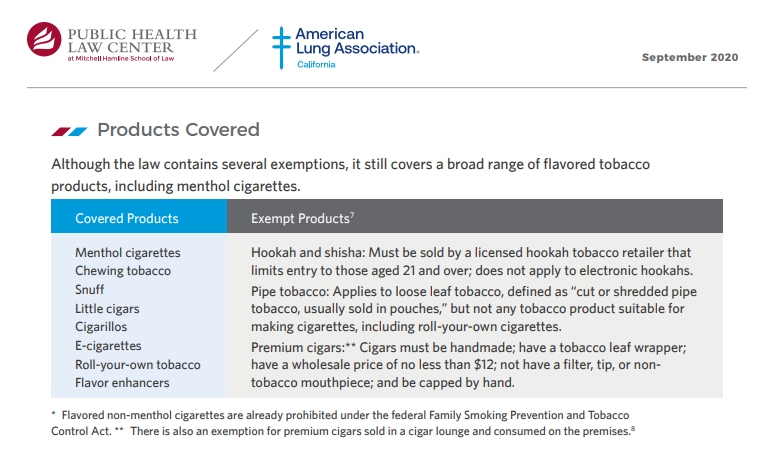
Location Restrictions
Licensing could include restrictions on where tobacco retailers are located, keeping them 1000 feet away from schools and other youth-sensitive zones. Restrictions might also include a limit on the total number of tobacco retailers in your community based on population.
For more information, please contact Jennifer Gill, Tobacco Control Program Manager, at (760) 631-5000 ext. 1001
 Follow us on Facebook @vcctobacco for resources, information, local, state and national tobacco-related news and upcoming events and trainings
Follow us on Facebook @vcctobacco for resources, information, local, state and national tobacco-related news and upcoming events and trainings
Follow us on Instagram and YouTube @sdstayinformed to stay up-to-date on VCC Tobacco Control events, news and facts
